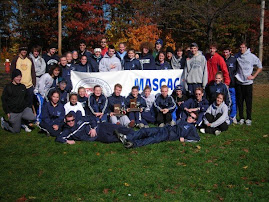 On May 3rd 40,000 people will be participating in the walk for hunger, and I will be one of them. The 20-mile Walk for Hunger begins on the Boston Common, and winds through Boston, Brookline, Newton, Watertown, and Cambridge before returning to the Boston Common.
On May 3rd 40,000 people will be participating in the walk for hunger, and I will be one of them. The 20-mile Walk for Hunger begins on the Boston Common, and winds through Boston, Brookline, Newton, Watertown, and Cambridge before returning to the Boston Common.The Walk is put on by Project Bread which is the state’s leading anti-hunger organization; Project Bread is dedicated to alleviating, preventing, and ultimately ending hunger in Massachusetts. Project Bread funds over 400 food pantries, soup kitchens, and food banks all over Massachusetts. They also runthe only statewide hunger hotline that answers 37,000 calls a year from families in need. They work with schools to offer breakfast programs, and fund summer programs so that kids get a nutritious meal when school's out.
 To found all the amazing programs they have, Project Bread does the walk for hunger which has been going on for 41 years, last year $4 million dollars was raised during the walk and they are hoping to have just as much success or more at this years walk.
To found all the amazing programs they have, Project Bread does the walk for hunger which has been going on for 41 years, last year $4 million dollars was raised during the walk and they are hoping to have just as much success or more at this years walk.When participating in the walk you can raise money as a team or individually, I am on a team with a few of my cousins who have been doing the walk for the past 3 years, our team, Walk This Way, has a goal of raising $3,000. Currently we only have raised $650 so we really need to step it up. This event is a great way to raise money and awareness, as well as in getting some exercise at the same time.
If you would like to donate to me or my team you can click on the link below or talk to me in class. Every little bit helps and would be really appreciated.
http://www.projectbread.org/site/TR/Walk/General?px=1505261&pg=personal&fr_id=1110



 According to a new study, eating mushrooms can help cut the
According to a new study, eating mushrooms can help cut the 












